Navigating the ESG Ecosystem: From Principles to Proof
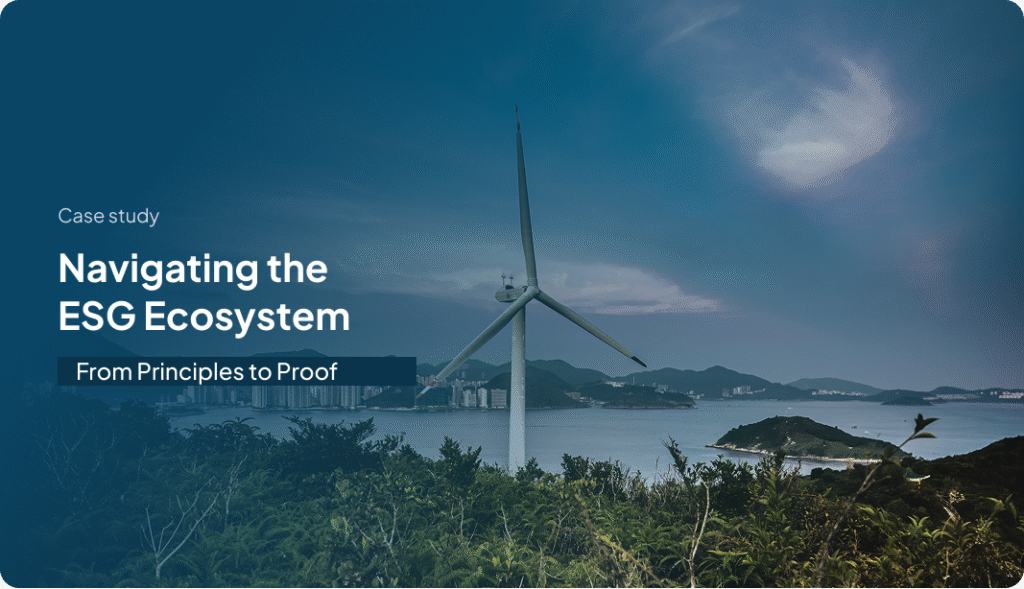
Navigating the ESG Ecosystem: From Principles to Proof UTOPIIC | Case Study Making ESG Actionable for Business—From Framework Fatigue to Strategic Clarity ESG is no longer a differentiator—it’s a baseline expectation. But for many businesses, the ESG ecosystem feels overwhelming. From fragmented frameworks to complex reporting demands, the journey from principle to proof often lacks direction and consistency. This case study showcases how one company overcame these barriers by embedding ESG into its core operations, aligning with leading frameworks, and strengthening its market credibility—without derailing operations or budgets. What You’ll Learn: A real-world example of ESG strategy done right• How to simplify framework alignment across BRSR, GRI, TCFD, SDGs• Steps to embed ESG data into business systems for transparency• Practical governance structures for ESG ownership and tracking• Methods to improve ESG ratings and reporting confidence• Tools, platforms, and partnerships that reduced ESG friction About the Engagement Led by UTOPIIC’s ESG transformation team, this engagement merged materiality analysis, stakeholder mapping, data governance, and assurance readiness into one cohesive strategy. Designed for companies navigating ESG complexity, this case study is a blueprint for turning ESG ambition into performance—clearly, credibly, and competitively. Download Now Select IndustryITFinanceHealthcareEducationOther Select Business SizeSmallMediumLargeEnterprise By submitting your personal data above, you consent to receive communications. You may unsubscribe at any time. Designing for Impact: How Product Carbon Footprints Drive Eco-Innovation and Circularity Designing for Impact: How Product Carbon Footprints Drive Eco-Innovation and Circularity • Articles & Blogs Navigating the ESG Ecosystem: From Principles to Proof Navigating the ESG Ecosystem: From Principles to Proof admin • July 8, 2025 • Read More » Beyond the Factory Gate: Using Product Carbon Footprints to Tackle Scope 3 Emissions Beyond the Factory Gate: Using Product Carbon Footprints to Tackle Scope 3 Emissions • Articles & Blogs Navigating the ESG Ecosystem: From Principles to Proof Navigating the ESG Ecosystem: From Principles to Proof admin • July 8, 2025 • Read More » Business & Climate Policy: What You Can Do Business & Climate Policy: What You Can Do • Articles & Blogs Navigating the ESG Ecosystem: From Principles to Proof Navigating the ESG Ecosystem: From Principles to Proof admin • July 8, 2025 • Read More » Product Carbon Footprints: The Missing Link in Supply Chain Decarbonization Product Carbon Footprints: The Missing Link in Supply Chain Decarbonization • Articles & Blogs The escalating urgency of climate change has turned attention toward global supply chains as significant contributors to greenhouse gas emissions. According to Read More » More Insights from UTOPIIC
Reaching Net Zero: Cost-Effective, Reliable & Competitive Solutions
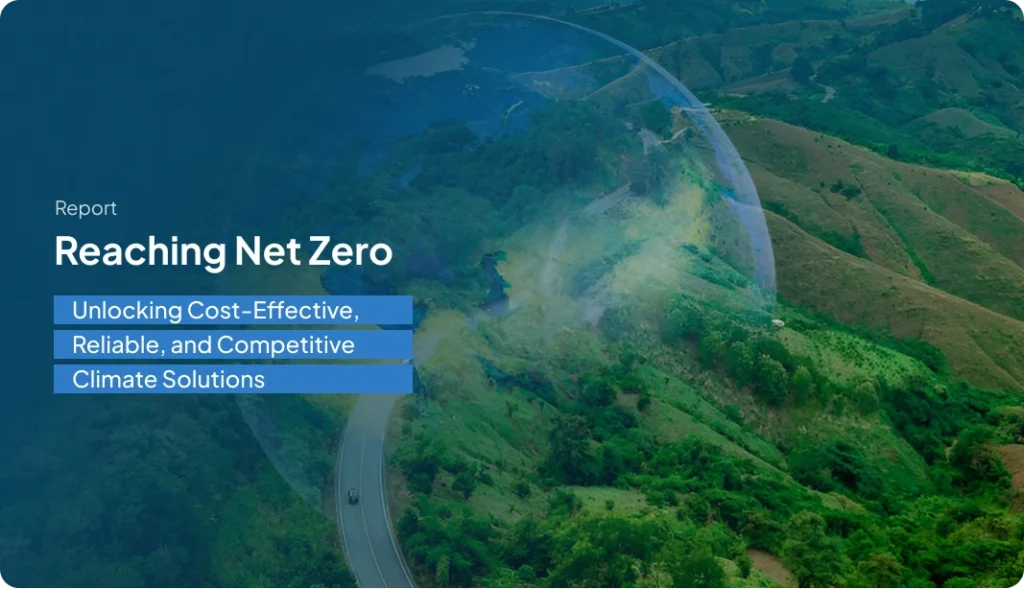
Reaching Net Zero:Cost-Effective, Reliable & Competitive Solutions UTOPIIC | E-Book Making Net Zero Achievable for Business—Without Breaking the BankNet zero isn’t just a long-term aspiration—it’s fast becoming a market expectation. But for many businesses, the path to decarbonization seems complex, costly, and disruptive. What’s needed is a clear, actionable approach that delivers environmental goals without compromising financial or operational performance. This report offers practical, business-oriented solutions to accelerate progress toward net zero. It focuses on cost-effective decarbonization levers, technologies, and partnerships that drive value creation while reducing emissions. What You’ll Learn:• Cost-efficient strategies for achieving net zero across scopes• Technology and energy transition pathways that are business-friendly• Frameworks for prioritizing actions based on ROI and feasibility• How to integrate decarbonization into core business models• Partnerships, platforms, and tools that reduce transition barriers• Examples of competitive advantage through climate leadership About the Research and ApproachCrafted by UTOPIIC’s climate action and strategy team, this report merges technical expertise, financial analysis, and global case studies to support strategic decarbonization. It’s a go-to guide for operational heads, CFOs, sustainability officers, and industry leaders aiming to reach net zero in a commercially viable way. Download Now Select IndustryITFinanceHealthcareEducationOther Select Business SizeSmallMediumLargeEnterprise By submitting your personal data above, you consent to receive communications. You may unsubscribe at any time. Designing for Impact: How Product Carbon Footprints Drive Eco-Innovation and Circularity Designing for Impact: How Product Carbon Footprints Drive Eco-Innovation and Circularity • Articles & Blogs Designing for Impact: How Product Carbon Footprints Drive Eco-Innovation and Circularity Designing for Impact: How Product Carbon Footprints Drive Eco-Innovation and Circularity Read More » Beyond the Factory Gate: Using Product Carbon Footprints to Tackle Scope 3 Emissions Beyond the Factory Gate: Using Product Carbon Footprints to Tackle Scope 3 Emissions • Articles & Blogs A significant obstacle on the path to net-zero emissions is the reduction of Scope 3 emissions. While companies around the world have Read More » Business & Climate Policy: What You Can Do Business & Climate Policy: What You Can Do • Articles & Blogs Climate change is among the most urgent and complex challenges confronting humanity today. It demands swift, collective, and transformative action across every Read More » Product Carbon Footprints: The Missing Link in Supply Chain Decarbonization Product Carbon Footprints: The Missing Link in Supply Chain Decarbonization • Articles & Blogs The escalating urgency of climate change has turned attention toward global supply chains as significant contributors to greenhouse gas emissions. According to Read More » More Insights from UTOPIIC
Building Sustainable Foundations for MSMEs: Key Challenges and Solutions
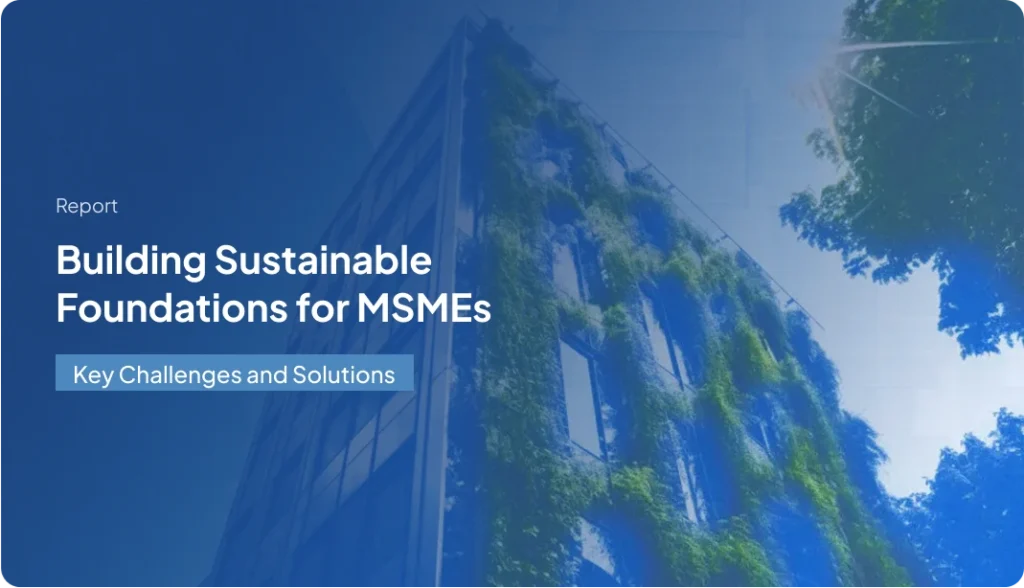
Building Sustainable Foundations for MSMEs: Key Challenges and Solutions UTOPIIC | E-Book Empowering MSMEs to Embrace Sustainability and ThriveMicro, Small, and Medium Enterprises (MSMEs) form the economic backbone of many nations, yet they face unique hurdles in navigating the ESG and sustainability landscape. Limited resources, lack of awareness, and fragmented regulatory access often hold them back from unlocking green growth opportunities. This report provides a comprehensive view of the sustainability journey for MSMEs, highlighting critical challenges while offering clear, scalable solutions. It equips business owners, policy makers, and ecosystem enablers with the tools and guidance to support future-ready MSMEs. What You’ll Learn:• Key sustainability challenges specific to MSMEs across sectors• Low-cost, high-impact ESG practices tailored for MSMEs• Opportunities to access green finance and sustainable supply chains• Policy and ecosystem interventions to enable MSME transformation• Case examples of successful MSME-led ESG initiatives• Tools and platforms to help MSMEs measure and report sustainability progress About the Research and ApproachDeveloped by UTOPIIC’s MSME and sustainability advisors, this report synthesizes field-level insights, industry case studies, and practical frameworks for action. It is designed for MSME leaders, development agencies, accelerators, and ESG ecosystem partners building inclusive, resilient business foundations. Download Now Select IndustryITFinanceHealthcareEducationOther Select Business SizeSmallMediumLargeEnterprise By submitting your personal data above, you consent to receive communications. You may unsubscribe at any time. Designing for Impact: How Product Carbon Footprints Drive Eco-Innovation and Circularity Designing for Impact: How Product Carbon Footprints Drive Eco-Innovation and Circularity • Articles & Blogs Designing for Impact: How Product Carbon Footprints Drive Eco-Innovation and Circularity Designing for Impact: How Product Carbon Footprints Drive Eco-Innovation and Circularity Read More » Beyond the Factory Gate: Using Product Carbon Footprints to Tackle Scope 3 Emissions Beyond the Factory Gate: Using Product Carbon Footprints to Tackle Scope 3 Emissions • Articles & Blogs A significant obstacle on the path to net-zero emissions is the reduction of Scope 3 emissions. While companies around the world have Read More » Business & Climate Policy: What You Can Do Business & Climate Policy: What You Can Do • Articles & Blogs Climate change is among the most urgent and complex challenges confronting humanity today. It demands swift, collective, and transformative action across every Read More » Product Carbon Footprints: The Missing Link in Supply Chain Decarbonization Product Carbon Footprints: The Missing Link in Supply Chain Decarbonization • Articles & Blogs The escalating urgency of climate change has turned attention toward global supply chains as significant contributors to greenhouse gas emissions. According to Read More » More Insights from UTOPIIC
ESG & Leadership: Why CEOs Can’t Afford to Ignore It
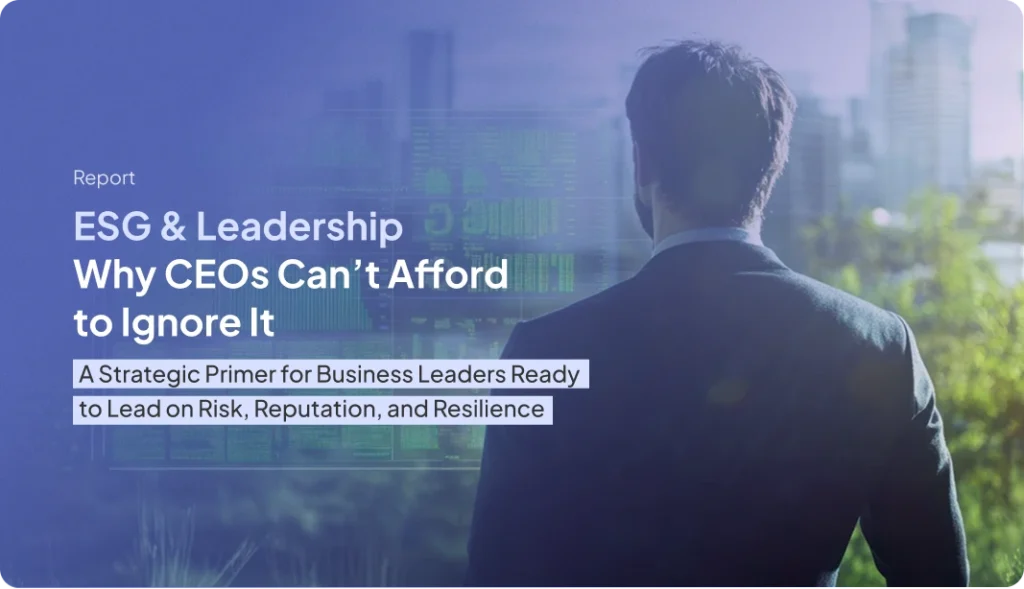
ESG & Leadership: Why CEOs Can’t Afford to Ignore It UTOPIIC | E-Book The C-Suite Imperative for ESG-Driven LeadershipEnvironmental, Social, and Governance (ESG) factors have moved from the sidelines to the boardroom. Today, CEOs face growing pressure—from investors, regulators, employees, and customers—to lead with ESG at the core of business decision-making. This isn’t just about compliance or reputation; it’s about long-term competitiveness, resilience, and stakeholder trust. This report outlines why ESG has become a leadership-level priority and what effective ESG stewardship looks like in practice. It provides a roadmap for C-suite leaders to embed ESG in corporate strategy, culture, and capital allocation, enabling meaningful progress and measurable impact. What You’ll Learn:• Why ESG is now a leadership and boardroom responsibility• The top ESG questions CEOs must be able to answer• Strategic frameworks for aligning ESG with growth and performance• How to integrate ESG into leadership KPIs and culture• Examples of CEO-led ESG transformations• How ESG leadership enhances investor confidence and enterprise value About the Research and ApproachBuilt by UTOPIIC’s ESG leadership advisory team, this report draws on executive-level engagements, sector trends, and global governance frameworks. It is a must-read for CEOs, board members, and business leaders seeking to align purpose, performance, and planet in today’s stakeholder-driven economy. Download Now Select IndustryITFinanceHealthcareEducationOther Select Business SizeSmallMediumLargeEnterprise By submitting your personal data above, you consent to receive communications. You may unsubscribe at any time. Designing for Impact: How Product Carbon Footprints Drive Eco-Innovation and Circularity Designing for Impact: How Product Carbon Footprints Drive Eco-Innovation and Circularity • Articles & Blogs Designing for Impact: How Product Carbon Footprints Drive Eco-Innovation and Circularity Designing for Impact: How Product Carbon Footprints Drive Eco-Innovation and Circularity Read More » Beyond the Factory Gate: Using Product Carbon Footprints to Tackle Scope 3 Emissions Beyond the Factory Gate: Using Product Carbon Footprints to Tackle Scope 3 Emissions • Articles & Blogs A significant obstacle on the path to net-zero emissions is the reduction of Scope 3 emissions. While companies around the world have Read More » Business & Climate Policy: What You Can Do Business & Climate Policy: What You Can Do • Articles & Blogs Climate change is among the most urgent and complex challenges confronting humanity today. It demands swift, collective, and transformative action across every Read More » Product Carbon Footprints: The Missing Link in Supply Chain Decarbonization Product Carbon Footprints: The Missing Link in Supply Chain Decarbonization • Articles & Blogs The escalating urgency of climate change has turned attention toward global supply chains as significant contributors to greenhouse gas emissions. According to Read More » More Insights from UTOPIIC
Voluntary Carbon Markets Post-2025: Are Offsets Still a Viable Net Zero Strategy?
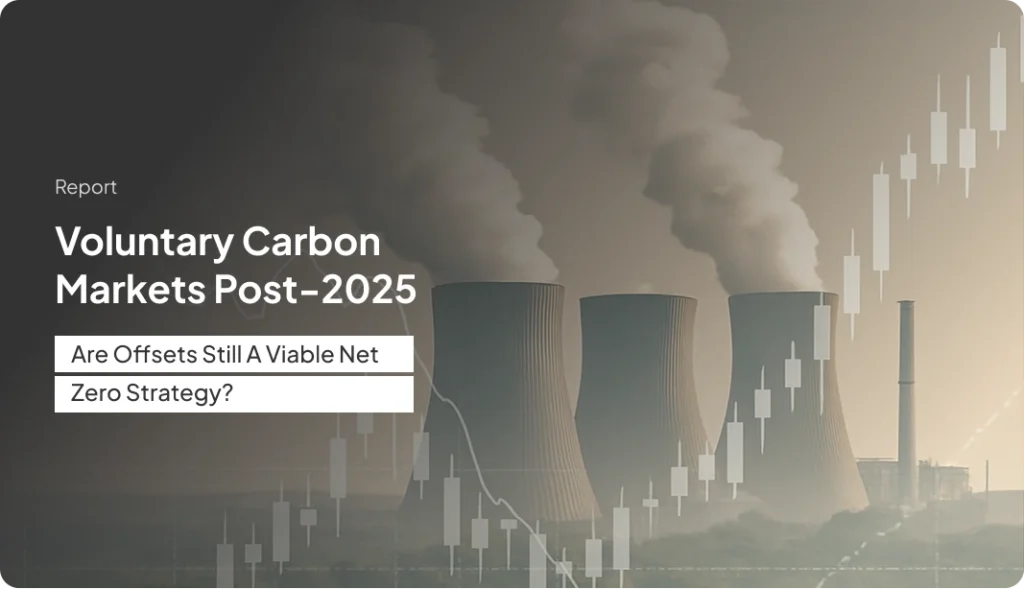
Voluntary Carbon Markets Post-2025: Are Offsets Still a Viable Net Zero Strategy? UTOPIIC | E-Book Exploring the Role of Offsets in a Changing Climate LandscapeThe era of voluntary carbon markets is entering a decisive phase. As we move beyond 2025, questions around the credibility, transparency, and real-world impact of carbon offsets are mounting. With evolving global standards, regulatory scrutiny, and investor demand for climate integrity, businesses must reassess whether offsets still align with long-term net-zero ambitions. This report dives deep into the post-2025 voluntary carbon market landscape, helping decision-makers evaluate when and how offsets can be part of a credible climate strategy. It explores evolving frameworks, due diligence requirements, and the shift toward high-integrity offsetting to support science-aligned decarbonization pathways. What You’ll Learn:• Trends shaping voluntary carbon markets post-2025• The difference between low- and high-integrity offsets• Best practices for offset procurement and due diligence• How to align offsets with corporate net-zero targets• Alternatives to offsets and integrating carbon removal strategies• Case studies of organizations rethinking offsetting in practice About the Research and ApproachCurated by UTOPIIC’s carbon strategy and policy experts, this report combines deep market insights, global best practices, and actionable frameworks. It’s designed for sustainability heads, CFOs, procurement teams, and anyone navigating the complexities of climate claims and offset credibility in today’s net-zero journey. Download Now Select IndustryITFinanceHealthcareEducationOther Select Business SizeSmallMediumLargeEnterprise By submitting your personal data above, you consent to receive communications. You may unsubscribe at any time. Reaching Net Zero: Cost-Effective, Reliable & Competitive Solutions Reaching Net Zero: Cost-Effective, Reliable & Competitive Solutions • Articles & Blogs Reaching Net Zero:Cost-Effective, Reliable & Competitive Solutions UTOPIIC | E-Book Making Net Zero Achievable for Business—Without Breaking the BankNet zero isn’t just Read More » Designing for Impact: How Product Carbon Footprints Drive Eco-Innovation and Circularity Designing for Impact: How Product Carbon Footprints Drive Eco-Innovation and Circularity • Articles & Blogs Designing for Impact: How Product Carbon Footprints Drive Eco-Innovation and Circularity Designing for Impact: How Product Carbon Footprints Drive Eco-Innovation and Circularity Read More » Beyond the Factory Gate: Using Product Carbon Footprints to Tackle Scope 3 Emissions Beyond the Factory Gate: Using Product Carbon Footprints to Tackle Scope 3 Emissions • Articles & Blogs A significant obstacle on the path to net-zero emissions is the reduction of Scope 3 emissions. While companies around the world have Read More » Business & Climate Policy: What You Can Do Business & Climate Policy: What You Can Do • Articles & Blogs Climate change is among the most urgent and complex challenges confronting humanity today. It demands swift, collective, and transformative action across every Read More » More Insights from UTOPIIC
Designing for Impact: How Product Carbon Footprints Drive Eco-Innovation and Circularity

Navigating the ESG Ecosystem: From Principles to Proof Navigating the ESG Ecosystem: From Principles to Proof admin • July 8, 2025 • Success Stories & Case Studies • No Comments Navigating the ESG Ecosystem: From Principles to Proof UTOPIIC | … Reaching Net Zero: Cost-Effective, Reliable & Competitive Solutions Reaching Net Zero: Cost-Effective, Reliable & Competitive Solutions admin • June 30, 2025 • Latest Trends & Reports • No Comments Reaching Net Zero:Cost-Effective, Reliable & Competitive Solutions UTOPIIC | E-Book … Building Sustainable Foundations for MSMEs: Key Challenges and Solutions Building Sustainable Foundations for MSMEs: Key Challenges and Solutions admin • June 30, 2025 • Latest Trends & Reports • No Comments Building Sustainable Foundations for MSMEs: Key Challenges and Solutions UTOPIIC … ESG & Leadership: Why CEOs Can’t Afford to Ignore It ESG & Leadership: Why CEOs Can’t Afford to Ignore It admin • June 30, 2025 • Latest Trends & Reports • No Comments ESG & Leadership: Why CEOs Can’t Afford to Ignore It … Voluntary Carbon Markets Post-2025: Are Offsets Still a Viable Net Zero Strategy? Voluntary Carbon Markets Post-2025: Are Offsets Still a Viable Net Zero Strategy? admin • June 30, 2025 • Latest Trends & Reports • No Comments Voluntary Carbon Markets Post-2025: Are Offsets Still a Viable Net … Designing for Impact: How Product Carbon Footprints Drive Eco-Innovation and Circularity Designing for Impact: How Product Carbon Footprints Drive Eco-Innovation and Circularity admin • June 27, 2025 • Articles & Blogs • No Comments Designing for Impact: How Product Carbon Footprints Drive Eco-Innovation and … Beyond the Factory Gate: Using Product Carbon Footprints to Tackle Scope 3 Emissions Beyond the Factory Gate: Using Product Carbon Footprints to Tackle Scope 3 Emissions admin • June 27, 2025 • Articles & Blogs • No Comments A significant obstacle on the path to net-zero emissions is … Business & Climate Policy: What You Can Do Business & Climate Policy: What You Can Do admin • June 27, 2025 • Articles & Blogs • No Comments Climate change is among the most urgent and complex challenges … The urgency to manage environmental impact has never been greater. Around the globe, businesses are exploring solutions to reduce their ecological footprint. One powerful tool is understanding a Product Carbon Footprint (PCF) — the total greenhouse gas emissions generated throughout a product’s lifecycle. By measuring PCFs, companies can unlock eco-design strategies and adopt circular practices that cut emissions, drive innovation, and contribute to a more sustainable future. This article explores the critical link between product carbon footprints, lifecycle thinking, eco-design, and circularity. It also examines the challenges companies face, the opportunities ahead, and real-world examples of success. Background: From Waste to Worth through Lifecycle Thinking Historically, most products followed a linear path — make, use, dispose. This take-make-waste model led to growing environmental degradation. In response, the concept of a circular economy emerged, promoting reuse, recycling, and resource efficiency. Standards such as ISO 14040 (Life Cycle Assessment) and ISO 14067 (Carbon Footprint of Products) now help businesses evaluate and reduce their environmental impacts. These frameworks encourage a cradle-to-grave approach, assessing a product from raw material extraction to end-of-life disposal. Eco-design integrates sustainability into the design process, enabling companies to make conscious choices at every stage. Emerging technologies like blockchain, big data, and AI are accelerating this transition, while increased consumer awareness and government incentives are pushing sustainability into the business mainstream. Key Challenges and Opportunities Challenges Complex data management: Calculating PCFs requires vast data, especially across global supply chains with diverse suppliers and standards. High costs & technical expertise: Smaller firms may struggle with the investments needed for tools, talent, and processes to measure and reduce emissions. Consumer behavior: Price and convenience often outweigh sustainability in purchase decisions, requiring companies to educate consumers about the benefits of green products. Evolving regulations: With shifting environmental laws, especially across geographies, businesses must stay updated and agile. Opportunities Material innovation: Companies are turning to plant-based polymers, recycled inputs, and low-carbon alternatives to reduce product footprints. Digital transformation: Tools powered by AI and machine learning help identify emission hotspots, optimize processes, and predict environmental impacts. Collaborative solutions: Partnerships with recyclers, suppliers, and other stakeholders are unlocking new circular solutions and sustainable supply chain practices. Brand advantage: Green innovation can enhance a company’s image, attract eco-conscious consumers, and open access to green finance and procurement. Solutions: Practical Pathways to Lower Emissions Life Cycle Assessment (LCA)Evaluates environmental impacts at every stage of a product’s life. LCA enables companies to make informed decisions—such as switching to greener materials or redesigning products for longevity. Eco-Design PrinciplesFocus on minimizing environmental impact during product design. This includes using fewer materials, avoiding hazardous substances, and enabling repairability and recyclability. Circular Economy StrategiesExamples include take-back schemes, product leasing models, and remanufacturing to extend product life and reduce waste. Digital Solutions & TransparencyTechnologies like blockchain provide real-time visibility into supply chains, supporting better emission tracking and verification. Eco-Labels & Consumer EducationLabels showing a product’s carbon footprint help build trust and guide consumer choice. Public campaigns and storytelling help bridge the gap between sustainable features and buyer awareness. Collaborative Advertising & PartnershipsJoint initiatives with NGOs, governments, and even competitors can accelerate innovation—especially in sectors like packaging, logistics, and fashion. Case Studies: Innovation in Action Allbirds x Adidas – Futurecraft.FootprintA collaboration that produced a sneaker with only 2.94 kg CO₂e per pair. The project involved redesigning materials, manufacturing, and delivery to drastically cut emissions—resulting in 63% fewer emissions than comparable products. Patagonia – Worn Wear ProgramA resale initiative where customers trade in used gear for store credit. Products are repaired and resold, keeping textiles out of landfills. Over 120,000 used items have been repurposed, combining environmental value with customer loyalty. IKEA – Flat-Pack Efficiency & Circular GoalsIKEA’s flat-pack design reduces transport emissions by optimizing storage. The brand also aims for 100% recycled or renewable materials by 2030, transforming design thinking into a climate solution. Decathlon – Shoe Recycling with RECYC’ELITCollaborating with recycling startups, Decathlon turns used sports
Beyond the Factory Gate: Using Product Carbon Footprints to Tackle Scope 3 Emissions

Navigating the ESG Ecosystem: From Principles to Proof Navigating the ESG Ecosystem: From Principles to Proof admin • July 8, 2025 • Success Stories & Case Studies • No Comments Navigating the ESG Ecosystem: From Principles to Proof UTOPIIC | Case Study Making ESG Actionable for Business—From Framework Fatigue to Strategic Clarity … Reaching Net Zero: Cost-Effective, Reliable & Competitive Solutions Reaching Net Zero: Cost-Effective, Reliable & Competitive Solutions admin • June 30, 2025 • Latest Trends & Reports • No Comments Reaching Net Zero:Cost-Effective, Reliable & Competitive Solutions UTOPIIC | E-Book Making Net Zero Achievable for Business—Without Breaking the BankNet zero isn’t just … Building Sustainable Foundations for MSMEs: Key Challenges and Solutions Building Sustainable Foundations for MSMEs: Key Challenges and Solutions admin • June 30, 2025 • Latest Trends & Reports • No Comments Building Sustainable Foundations for MSMEs: Key Challenges and Solutions UTOPIIC | E-Book Empowering MSMEs to Embrace Sustainability and ThriveMicro, Small, and Medium … ESG & Leadership: Why CEOs Can’t Afford to Ignore It ESG & Leadership: Why CEOs Can’t Afford to Ignore It admin • June 30, 2025 • Latest Trends & Reports • No Comments ESG & Leadership: Why CEOs Can’t Afford to Ignore It UTOPIIC | E-Book The C-Suite Imperative for ESG-Driven LeadershipEnvironmental, Social, and Governance … Voluntary Carbon Markets Post-2025: Are Offsets Still a Viable Net Zero Strategy? Voluntary Carbon Markets Post-2025: Are Offsets Still a Viable Net Zero Strategy? admin • June 30, 2025 • Latest Trends & Reports • No Comments Voluntary Carbon Markets Post-2025: Are Offsets Still a Viable Net Zero Strategy? UTOPIIC | E-Book Exploring the Role of Offsets in a … Designing for Impact: How Product Carbon Footprints Drive Eco-Innovation and Circularity Designing for Impact: How Product Carbon Footprints Drive Eco-Innovation and Circularity admin • June 27, 2025 • Articles & Blogs • No Comments Navigating the ESG Ecosystem: From Principles to Proof Navigating the ESG Ecosystem: From Principles to Proof admin • July 8, 2025 • … Beyond the Factory Gate: Using Product Carbon Footprints to Tackle Scope 3 Emissions Beyond the Factory Gate: Using Product Carbon Footprints to Tackle Scope 3 Emissions admin • June 27, 2025 • Articles & Blogs • No Comments A significant obstacle on the path to net-zero emissions is the reduction of Scope 3 emissions. While companies around the world have … A significant obstacle on the path to net-zero emissions is the reduction of Scope 3 emissions. While companies around the world have made notable progress in cutting their direct emissions (Scope 1) and emissions from purchased electricity (Scope 2), Scope 3 emissions—those that occur across the entire value chain—remain difficult to track and reduce. These emissions account for more than 70% of total corporate greenhouse gas (GHG) emissions, making them a critical target for decarbonization. Product Carbon Footprints (PCFs) are emerging as vital tools in this effort. PCFs quantify the GHG emissions associated with a product throughout its lifecycle, providing visibility into carbon hotspots and opportunities for improvement. Schneider Electric and the World Economic Forum’s Industry Net Zero Accelerator have explored PCF-sharing frameworks to support collective decarbonization. Understanding Emission Scopes GHG emissions are categorized into three scopes. Scope 1 includes direct emissions from owned or controlled sources—such as company vehicles or on-site industrial processes. Scope 2 comprises indirect emissions from purchased electricity, heat, or steam. These are generally easier to monitor and mitigate through operational changes or switching to renewable energy. Scope 3, however, includes all other indirect emissions that occur outside a company’s direct operations but are linked to its value chain—upstream and downstream. These include emissions from raw material extraction, supplier manufacturing, transportation, product use, and end-of-life disposal. Due to their complexity and dependence on third parties, Scope 3 emissions are significantly harder to address, yet they typically represent the largest portion of a company’s carbon footprint. Decarbonization Initiation Strategies To reduce Scope 3 emissions, companies must engage their entire value chain. Global value chains (GVCs), responsible for 70% of today’s international trade, are complex networks involving suppliers of all sizes. According to the World Economic Forum, eight global value chains alone account for over 50% of worldwide emissions. Given this, a multi-pronged strategy is required to drive transformation: Supplier and Customer Engagement: Integrate carbon considerations into procurement by prioritizing low-carbon materials and suppliers. Volvo Trucks, for instance, partners with a Swedish steel manufacturer to source fossil-free steel. Similarly, Komatsu co-develops zero-emission mining equipment with its customers. Product Specifications and Design: Modify product designs to reduce emissions across the lifecycle. This includes material substitutions, lightweighting, and shifting to bio-based alternatives. BHP is exploring direct-reduced-iron (DRI) processes with HBIS, while automakers replace metals with lighter plastics to cut use-phase emissions. Strategic Collaborations: Co-developing low-carbon technologies with supply chain partners enhances decarbonization. Vale and Boston Metal are advancing molten-oxide electrolysis (MOE) to reduce steel-related emissions. Evonik and Unilever developed bio-based surfactants to reduce product-level emissions. End-of-Life Solutions: Circular practices like recycling reduce both upstream and downstream emissions. Ørsted and Salzgitter collaborate to incorporate wind turbine scrap into new steel production. Sustainable Investment Strategies: Companies can pivot into low-carbon markets. Schneider Electric, for example, transitioned from hardware to energy management services, and Neste invested in shifting its oil portfolio to biofuels. Vertical Integration: Upstream integration (e.g., raw material processing) and downstream integration (e.g., customer usage) give firms more control over emissions. LKAB adopted direct reduced iron processes to manage upstream emissions more effectively. PCF Methodologies To standardize and support PCF calculations, leading organizations have developed rigorous methodologies rooted in international standards. BASF’s PCF calculation tool (SCOTT) is one such example. Built on ISO 14040:2006, 14044:2006, and ISO 14067:2018 standards, it provides a cradle-to-gate approach for assessing product-level emissions. The declared unit is 1 kg of unpackaged product at the factory gate, regardless of its state (solid, liquid, gas), with transport emissions excluded. Allocation schemes follow guidance from sources like Plastics Europe and WBCSD Chemicals. Roland Berger’s methodology outlines a seven-step process: (1) calculating CO₂ emissions; (2) establishing a baseline;
Business & Climate Policy: What You Can Do

Navigating the ESG Ecosystem: From Principles to Proof Navigating the ESG Ecosystem: From Principles to Proof admin • July 8, 2025 • Success Stories & Case Studies • No Comments Navigating the ESG Ecosystem: From Principles to Proof UTOPIIC | Case Study Making ESG Actionable for Business—From Framework Fatigue to Strategic Clarity … Reaching Net Zero: Cost-Effective, Reliable & Competitive Solutions Reaching Net Zero: Cost-Effective, Reliable & Competitive Solutions admin • June 30, 2025 • Latest Trends & Reports • No Comments Reaching Net Zero:Cost-Effective, Reliable & Competitive Solutions UTOPIIC | E-Book Making Net Zero Achievable for Business—Without Breaking the BankNet zero isn’t just … Building Sustainable Foundations for MSMEs: Key Challenges and Solutions Building Sustainable Foundations for MSMEs: Key Challenges and Solutions admin • June 30, 2025 • Latest Trends & Reports • No Comments Building Sustainable Foundations for MSMEs: Key Challenges and Solutions UTOPIIC | E-Book Empowering MSMEs to Embrace Sustainability and ThriveMicro, Small, and Medium … ESG & Leadership: Why CEOs Can’t Afford to Ignore It ESG & Leadership: Why CEOs Can’t Afford to Ignore It admin • June 30, 2025 • Latest Trends & Reports • No Comments ESG & Leadership: Why CEOs Can’t Afford to Ignore It UTOPIIC | E-Book The C-Suite Imperative for ESG-Driven LeadershipEnvironmental, Social, and Governance … Voluntary Carbon Markets Post-2025: Are Offsets Still a Viable Net Zero Strategy? Voluntary Carbon Markets Post-2025: Are Offsets Still a Viable Net Zero Strategy? admin • June 30, 2025 • Latest Trends & Reports • No Comments Voluntary Carbon Markets Post-2025: Are Offsets Still a Viable Net Zero Strategy? UTOPIIC | E-Book Exploring the Role of Offsets in a … Designing for Impact: How Product Carbon Footprints Drive Eco-Innovation and Circularity Designing for Impact: How Product Carbon Footprints Drive Eco-Innovation and Circularity admin • June 27, 2025 • Articles & Blogs • No Comments Navigating the ESG Ecosystem: From Principles to Proof Navigating the ESG Ecosystem: From Principles to Proof admin • July 8, 2025 • … Beyond the Factory Gate: Using Product Carbon Footprints to Tackle Scope 3 Emissions Beyond the Factory Gate: Using Product Carbon Footprints to Tackle Scope 3 Emissions admin • June 27, 2025 • Articles & Blogs • No Comments Navigating the ESG Ecosystem: From Principles to Proof Navigating the ESG Ecosystem: From Principles to Proof admin • July 8, 2025 • … Climate change is among the most urgent and complex challenges confronting humanity today. It demands swift, collective, and transformative action across every sector of society. Businesses, as both significant contributors to global greenhouse gas emissions and powerful engines of economic growth, hold a uniquely influential position. Their role extends far beyond mitigation—they have the ability to shape effective climate policy, accelerate sustainable innovation, and lead by example on the path to a low-carbon future. By integrating climate considerations into strategy, operations, and supply chains, companies can turn risk into resilience and ambition into advantage. Engaging in climate policy is not just a responsibility—it’s a strategic necessity. Proactive businesses can help create enabling policy environments, drive industry standards, and unlock new markets. Collaboration with governments, investors, and civil society will be key to scaling meaningful impact. The future of climate action will be business-led, data-driven, and policy-aligned. Step 1: Assess and Understand Your Impact The first step in shaping meaningful climate policy is understanding your organization’s current environmental footprint. This begins with a thorough evaluation of your sustainability practices, including emissions, resource use, waste generation, and supply chain impacts. Developing a comprehensive greenhouse gas (GHG) inventory using standardized tools such as the Greenhouse Gas Protocol will help identify key emissions sources across Scope 1 (direct), Scope 2 (indirect from energy use), and Scope 3 (value chain-related) categories. Alongside emissions tracking, businesses should review their energy and water consumption, assess material usage, and evaluate waste generation and disposal practices. An analysis of upstream and downstream supply chain impacts is also essential, especially in carbon-intensive sectors. Stakeholder engagement at this stage is critical. Listening to employees, investors, consumers, and community members can surface risks, priorities, and opportunities that might otherwise be overlooked. Businesses can leverage widely available tools such as the EPA’s business emissions calculators, the World Resources Institute’s sector-specific guidance, and GHG assessment platforms to guide their analysis. Identifying climate-related risks—both physical (like extreme weather and sea-level rise) and transitional (such as regulatory shifts, market changes, or evolving consumer behavior)—is also a vital part of this assessment. Step 2: Develop a Strategic Climate Policy Framework With a clear understanding of your impact, the next step is to define a climate strategy that sets ambitious but achievable goals. Targets should be SMART: specific, measurable, achievable, relevant, and time-bound. For example, a company might aim to reduce GHG emissions by 50% over ten years or transition to 100% renewable energy by 2030. Your strategy should clearly define key actions to meet these goals—whether through investments in clean energy, energy efficiency upgrades, circular production models, or nature-based solutions like reforestation. These actions should align with business goals and include realistic timelines, budget allocations, and roles and responsibilities. It’s important to consider mitigation (reducing emissions), adaptation (preparing for climate impacts), and innovation (developing or adopting new climate technologies). Companies should also align with recognized frameworks such as the Science-Based Targets initiative (SBTi), circular economy principles, and natural climate solutions to ensure global relevance and impact. Embedding climate considerations into broader business objectives—from procurement to product development—ensures integration, accountability, and long-term performance. Step 3: Plan Implementation Effective implementation transforms strategic intent into measurable action. Begin by mobilizing resources—financial, human, and technical—to support your climate initiatives. Develop an action plan with clearly assigned responsibilities, timelines, milestones, and deliverables. Deploy appropriate tools and technologies to support execution. Project management platforms like Asana, Monday.com, or Trello can help coordinate efforts, while data analytics tools such as Power BI or Tableau allow you to monitor and communicate environmental performance. Regular monitoring is essential to track progress, evaluate effectiveness, and identify areas requiring adjustment. Define and track key performance indicators (KPIs) linked to your climate goals,
Product Carbon Footprints: The Missing Link in Supply Chain Decarbonization

The escalating urgency of climate change has turned attention toward global supply chains as significant contributors to greenhouse gas emissions. According to the Carbon Disclosure Project (CDP), supply chain emissions can be up to 11.4 times higher than a company’s direct operational emissions. These indirect emissions, classified as Scope 3, form a substantial part of corporate carbon footprints and demand immediate attention. In response, companies are adopting Product Carbon Footprints (PCFs)—a lifecycle-based measurement of greenhouse gas emissions associated with individual products—as a foundational tool for sustainability strategy. PCFs offer a precise method for understanding emissions across all phases of a product’s lifecycle, from raw material extraction to end-of-life disposal. By revealing carbon hotspots in supply chains, PCFs empower businesses to make informed decisions, develop targeted reduction strategies, and transition toward more sustainable and resilient supply chain operations. As sustainability reporting becomes increasingly data-driven and standardized, PCFs have evolved into essential components of environmental transparency, accountability, and continuous improvement. This article explores the role of PCFs in decarbonizing supply chains, detailing current challenges, emerging opportunities, and real-world strategies that highlight their strategic importance. Understanding PCFs and Their Link to Supply Chain Sustainability A Product Carbon Footprint (PCF) quantifies the total greenhouse gas emissions associated with a product throughout its lifecycle, expressed in kilograms of carbon dioxide equivalent (kg CO₂e). These emissions are assessed using Life Cycle Assessment (LCA) methodologies, which cover the full spectrum of product stages including raw material sourcing, manufacturing, transportation, usage, and disposal. PCFs provide a product-specific lens for tracking Scope 3 emissions and form a bridge between corporate climate commitments and operational action. With frameworks like the Greenhouse Gas Protocol, ISO 14067, the Corporate Sustainability Reporting Directive (CSRD), and the Science Based Targets initiative (SBTi) guiding the practice, PCFs have gained growing relevance. Investors now evaluate companies based on their transparency around Scope 3 data, and consumers are increasingly demanding detailed information on environmental impacts. Through PCFs, organizations gain critical insight into where emissions are most concentrated, which suppliers or processes are carbon-intensive, and how these emissions can be mitigated. PCFs also contribute to identifying inefficiencies and uncovering cost-saving opportunities in energy use, logistics, and design. Challenges in Implementing Product Carbon Footprints Despite their potential, PCFs are often difficult to develop and implement effectively. One of the primary challenges is data availability. Gathering accurate, granular data across multi-tiered global supply chains is a daunting task, especially when suppliers vary in their digital maturity and awareness of carbon reporting practices. Data gaps often force companies to rely on generic emission factors, which compromise accuracy and consistency. Another barrier lies in the lack of standardized implementation practices. While global frameworks provide foundational guidance, they leave room for interpretation. Differences in system boundaries—such as cradle-to-gate versus cradle-to-grave—functional units, and allocation methods result in inconsistencies, making benchmarking and comparison difficult. This inconsistency also hinders the integration of PCFs into broader reporting systems. Supplier engagement is another significant obstacle. Many small and medium-sized suppliers lack the knowledge, tools, or incentives to participate in carbon tracking. Without buyer support or collaboration, emissions data is often seen as a compliance burden rather than a shared responsibility. Additionally, the cost and complexity of conducting PCF assessments can be prohibitive. Evaluating a large portfolio of products requires lifecycle specialists, specialized software, and integration with procurement and ERP systems. Without clear ROI or regulatory pressure, companies may struggle to justify these investments. Opportunities for Business and Environmental Impact Despite these hurdles, the benefits of implementing PCFs are both substantial and far-reaching. One of the most immediate advantages is the potential for operational optimization. PCF assessments often reveal inefficiencies in manufacturing, packaging, and logistics that, when addressed, not only reduce emissions but also cut costs. Improved process design and energy efficiency can deliver both environmental and economic returns. From a brand perspective, PCFs enhance credibility and build trust among environmentally conscious consumers. Companies that provide transparent emissions data set higher standards in the marketplace, differentiate themselves from competitors, and strengthen brand loyalty. Moreover, PCFs serve as a catalyst for supplier collaboration. When companies and their suppliers work together on emissions tracking and reduction, it fosters innovation in materials, design, and logistics—all critical levers for sustainable value chain transformation. Furthermore, the integration of PCFs into ESG strategies unlocks new access to green financing. Investors and financial institutions increasingly favor organizations that can demonstrate robust climate accountability. Verified PCF data supports this credibility and can strengthen proposals for sustainability-linked loans and impact investments. Strategies for Effective PCF Implementation Organizations looking to implement PCFs should begin with high-impact products—those with significant production volumes, profit margins, or resource intensity. Starting with these products allows companies to achieve early wins, build internal capability, and generate momentum for wider application. Technology is another enabler. Digital lifecycle assessment tools such as SimaPro and OpenLCA, along with cloud-based carbon management platforms, streamline data gathering, improve accuracy, and integrate seamlessly with procurement systems. These technologies help reduce the manual effort and error associated with traditional carbon accounting practices. Incorporating PCFs into procurement practices is essential. Companies should require suppliers to provide emissions data as part of contract negotiations and performance reviews. Suppliers who deliver high-quality data or demonstrate emissions reductions should be rewarded through longer contracts, better terms, or preferred status. This incentivizes participation and makes emissions tracking a shared responsibility across the value chain. To overcome supplier capacity limitations, organizations can provide training programs, funding support, and standardized calculation templates. Simplifying the process and offering educational resources helps build supplier readiness and improves the consistency of reported data. Collaboration with industry groups and participation in sector-wide initiatives such as the Partnership for Carbon Transparency (PACT), the World Business Council for Sustainable Development (WBCSD), and Product Environmental Footprint (PEF) pilots can also drive standardization and knowledge-sharing. Equally important is transparent communication. Companies should disclose PCF results in sustainability reports and product labeling, explaining their value and impact. Educating customers and stakeholders about PCFs strengthens engagement and reinforces the organization’s commitment to climate action. Ensuring that PCF
Building Credibility in Sustainability: The Stakeholder-Driven Evolution of EPDs
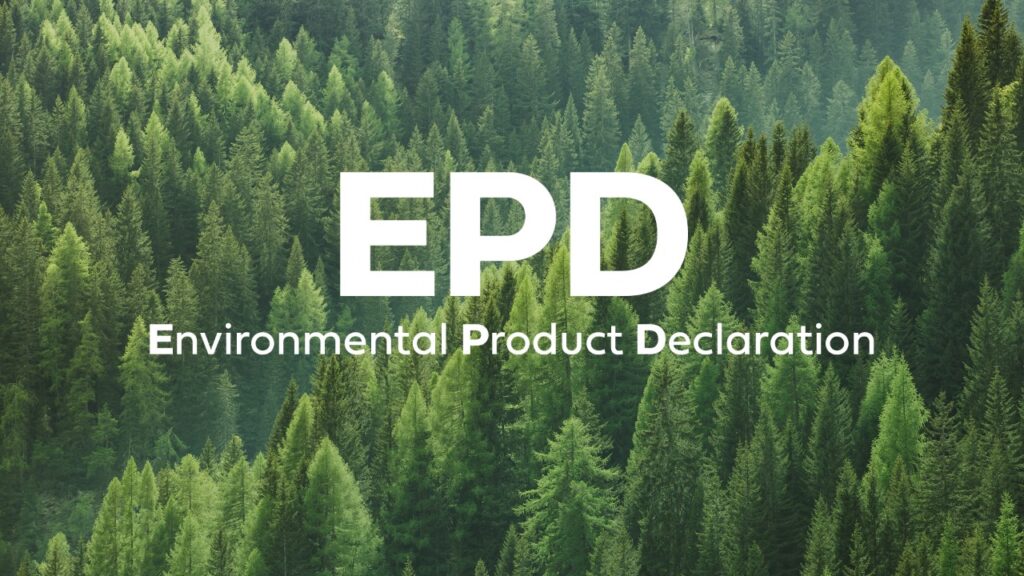
Environmental Product Declarations (EPDs) have emerged as a cornerstone of sustainable business practices, offering a standardized, transparent way for organizations to communicate the environmental footprint of their products. As global industries pivot towards more sustainable models, EPDs have become essential tools for procurement, regulatory compliance, and corporate social responsibility. However, the effective development and implementation of EPDs is not a solitary effort. It requires collaboration among diverse stakeholders, including manufacturers, regulators, consumers, and environmental organizations. Understanding the roles, responsibilities, and influence of these stakeholders is vital to realizing the full potential of EPDs in driving sustainability. What Are Environmental Product Declarations? An Environmental Product Declaration (EPD) is a third-party verified, standardized document that communicates objective, quantifiable information about the environmental impact of a product throughout its lifecycle. EPDs are based on Life Cycle Assessment (LCA) and adhere to international standards such as ISO 14025 and EN 15804. Unlike vague sustainability claims, EPDs deliver concrete data—enabling transparency, comparability, and authenticity. Evolution and Growing Importance Initially focused on building materials within the construction sector, the application of EPDs has expanded significantly across industries such as fashion, electronics, and consumer goods. This growth is fueled by stricter environmental regulations, investor and consumer demand for transparency and integration with global sustainability initiatives (e.g., the EU Green Deal, Paris Agreement). EPDs are increasingly viewed as vital components of ESG reporting, supply chain management, and green marketing strategies. Challenges in EPD Development and Implementation 1. Complexity and Cost Conducting a full LCA and producing an EPD requires time, technical expertise, and financial resources—posing a significant barrier for small and medium enterprises (SMEs). Verification fees and specialized tools increase the overall cost. 2. Standardization and Comparability Issues Despite adherence to standards like ISO 14025, inconsistencies in LCA methodology, data collection, and interpretation limit the comparability of EPDs across regions and sectors. This reduces their credibility and scalability. 3. Low Market Awareness and Adoption Many companies and consumers remain unaware of EPDs, limiting their influence on decision-making. Without adequate awareness campaigns and education, EPDs risk being underutilized. 4. Regulatory Fragmentation Different regions impose varying EPD requirements, creating compliance burdens for multinational companies. For example, the EU emphasizes detailed carbon reporting, while North American and Asian markets may prioritize different criteria. 5. Data Availability and Integrity Accurate EPDs depend on high-quality data across the product lifecycle. Gaps in supply chain transparency, especially in global operations, can undermine EPD credibility. 6. Verification Bottlenecks Limited availability of accredited verifiers slows the certification process. High costs and labor-intensive reviews discourage wider participation—particularly among SMEs. Opportunities for Stakeholder Collaboration 1. Technological Innovation AI-based LCA tools and blockchain-enabled traceability systems can reduce costs, improve data accuracy, and streamline verification—making EPDs more accessible and credible. 2. Standard Harmonization Efforts to align EPD methodologies globally—across initiatives like GRI, ISO, and the Science-Based Targets initiative—can ease compliance and improve comparability. 3. Rising Consumer Demand Sustainability-savvy consumers increasingly seek transparent information. EPDs empower companies to differentiate products, strengthen brand trust, and enhance customer loyalty. 4. Corporate ESG Integration Many companies are linking EPDs with carbon neutrality and net-zero goals. EPDs improve ESG disclosures and support green procurement strategies. 5. Government Incentives Policy mechanisms such as green public procurement, subsidies, and tax incentives can accelerate EPD adoption, especially among resource-constrained businesses. 6. Public-Private Partnerships Collaborations between government bodies, research institutes, and private firms can foster innovation, training, and knowledge sharing, making EPDs more scalable and effective. Stakeholder Strategies Manufacturers and Businesses Invest in Digital LCA Tools to streamline EPD creation and ensure data accuracy. Integrate Sustainability into Supply Chains through collaborative supplier programs and procurement requirements. Use EPDs in Marketing and Procurement to differentiate products and drive demand for greener solutions. Educate Customers via eco-labeling and sustainability campaigns to improve market literacy. Partner with Third Parties (e.g., certifiers, NGOs, academic institutions) to build credible, high-quality EPDs. Policymakers and Regulators Establish Unified EPD Standards to ensure consistency and reduce compliance complexity. Offer Financial Support through tax relief and grants for EPD development, particularly for SMEs. Mandate EPDs in Public Procurement to drive market-wide adoption and elevate sustainability criteria. Promote Industry Collaboration by facilitating forums, shared databases, and cross-sector learning platforms. Conclusion EPDs hold the potential to redefine how industries measure and communicate environmental performance. Their success, however, hinges on multi-stakeholder collaboration—across businesses, regulators, consumers, and third-party verifiers. Overcoming challenges such as cost, standardization, and awareness requires innovation, alignment, and coordinated action. With greater investment, education, and policy support, EPDs can serve as foundational tools for sustainability—guiding transparent decisions, driving greener markets, and building trust in an era where environmental integrity matters more than ever. In a world seeking clarity and accountability, EPDs may well be the blueprint for the next generation of sustainable commerce. Navigating the ESG Ecosystem: From Principles to Proof Navigating the ESG Ecosystem: From Principles to Proof admin • July 8, 2025 • Success Stories & Case Studies • No Comments Navigating the ESG Ecosystem: From Principles to Proof UTOPIIC | Case Study Making ESG Actionable for Business—From Framework Fatigue to Strategic Clarity … Reaching Net Zero: Cost-Effective, Reliable & Competitive Solutions Reaching Net Zero: Cost-Effective, Reliable & Competitive Solutions admin • June 30, 2025 • Latest Trends & Reports • No Comments Reaching Net Zero:Cost-Effective, Reliable & Competitive Solutions UTOPIIC | E-Book Making Net Zero Achievable for Business—Without Breaking the BankNet zero isn’t just … Building Sustainable Foundations for MSMEs: Key Challenges and Solutions Building Sustainable Foundations for MSMEs: Key Challenges and Solutions admin • June 30, 2025 • Latest Trends & Reports • No Comments Building Sustainable Foundations for MSMEs: Key Challenges and Solutions UTOPIIC | E-Book Empowering MSMEs to Embrace Sustainability and ThriveMicro, Small, and Medium … ESG & Leadership: Why CEOs Can’t Afford to Ignore It ESG & Leadership: Why CEOs Can’t Afford to Ignore It admin • June 30, 2025 • Latest Trends & Reports • No Comments ESG & Leadership: Why CEOs Can’t Afford to Ignore It UTOPIIC | E-Book The C-Suite Imperative for ESG-Driven LeadershipEnvironmental, Social, and Governance … Voluntary Carbon
